Brut de Forge Bowie
According to the Texas Stat Historical Society:
“In 1838, Rezin P. Bowie, brother of Alamo hero James Bowie claimed that he made the first Bowie knife while the Bowies lived in Avoyelles Parish, Louisiana. He designed it as a hunting knife and gave it to James for protection after his brother had been shot in a fight. Herzehian Dunham, Notary Public in Avoyelles Parish certified that blacksmith Jesse Clifft, who lived on Bayou Boeuf and was a close friend and neighbor of the Bowies in the 1820s, forged the knife according to Rezin Bowie’s design. The original Bowie knife was like a butcher knife in profile, with a thin blade but no silver mounts. Bowie wore it in a silver-mounted black-leather sheath.”
There were several iterations of the Bowie knife since then, and there are countless books written with the Bowie knife as the primary subject matter. Today, almost any large heavy knife is likely to be called a bowie knife.
This Brut de Forge Bowie was forged from a similar tine as Knife – 42 Hunter Forged from an Implement Tine. To the right it is being normalized. Notice the groove (or fuller) in the tang. I cut that with the belt grinder. It serves a couple of purposes. It lightens the knife. It makes less surface area of the tang that must be flattened and gives the epoxy some space.
- Blade – 8 ¾”
- Overall 13 ½”
I also used the cross peen to hammer a slight fuller across the top of the knife. This gives the knife a little more width from the piece of metal without weakening the blade.
In the photo below I tried the Brut de Forge Bowie out before I put the scales on. This is chopping a stick of hophornbeam to make sure it is performing as expected. It wasn’t even fully sharpened yet when I did this test.
I also found this to be a little harder than I wanted after two tempering cycles, so I wound up tempering it for one more 2-hour cycle.
The handle was finished with the help of the scalloped belts. I have then in 220, 320 and 600 grit.
Then I finished with 1000 and 2000 grit felt backed belt

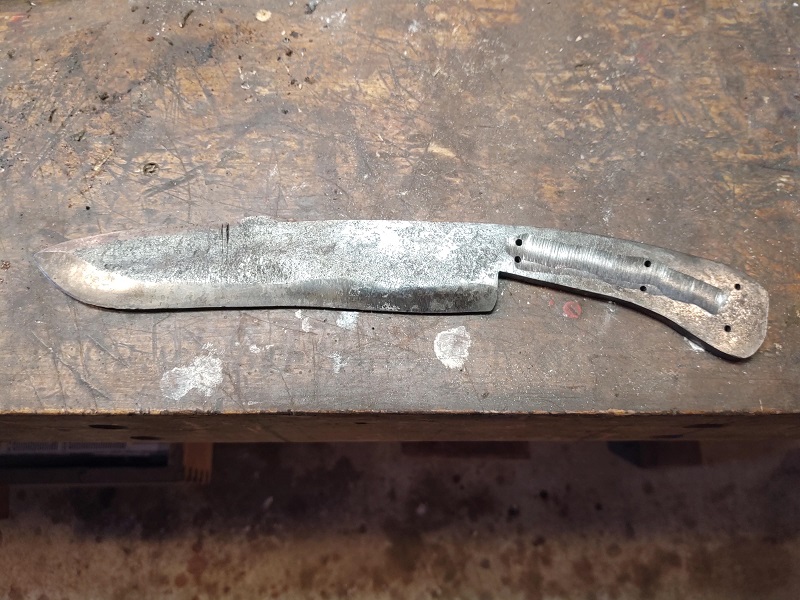
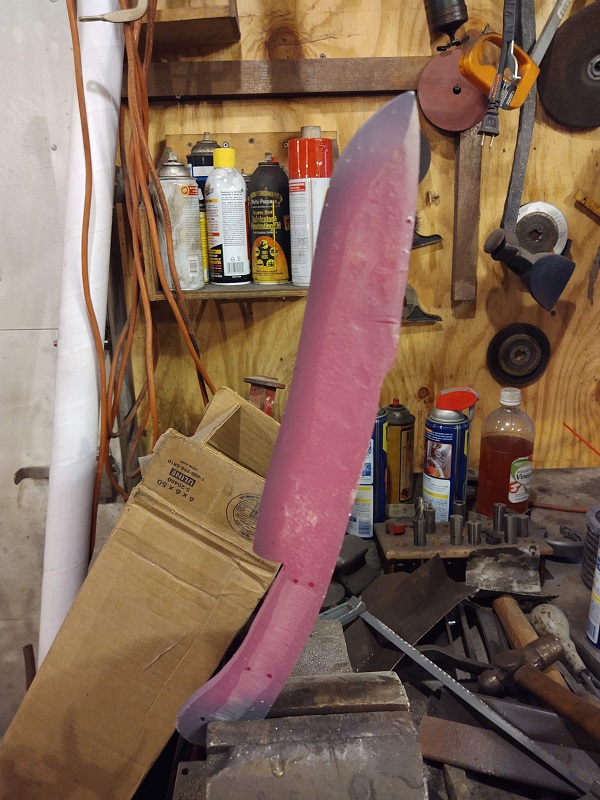

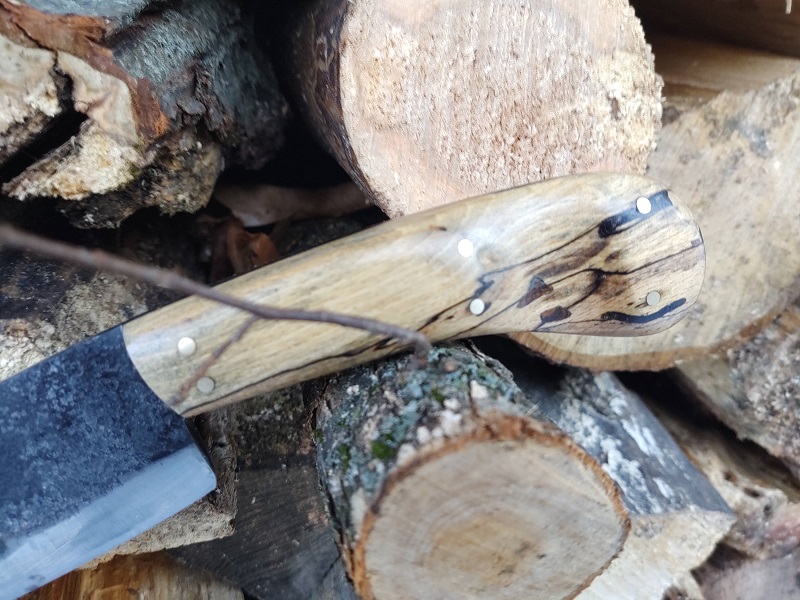

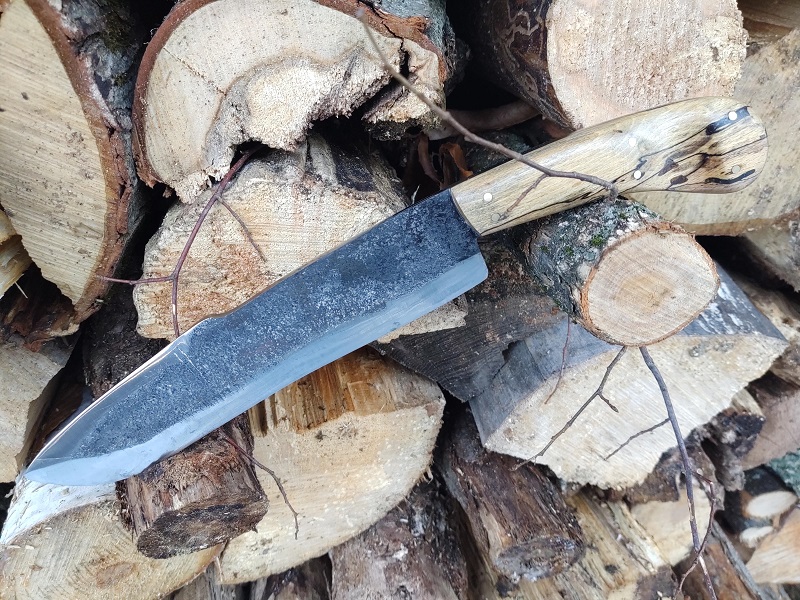
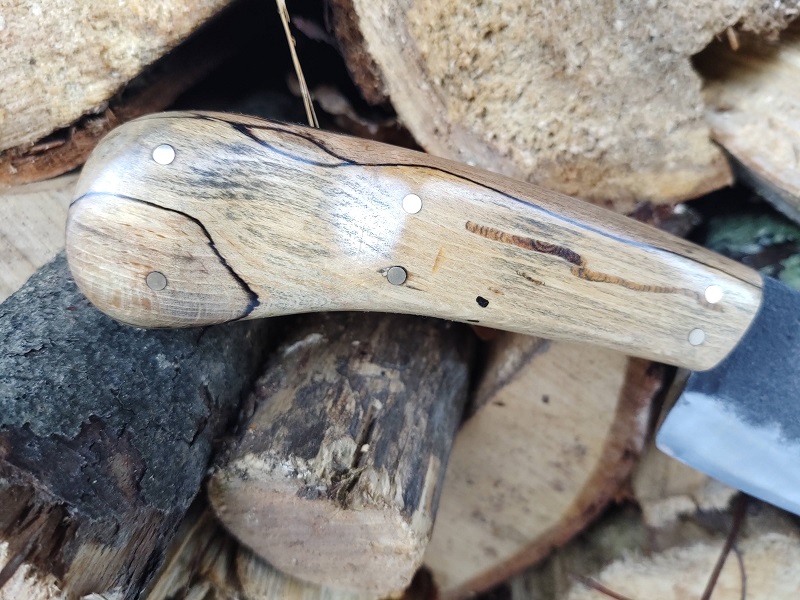

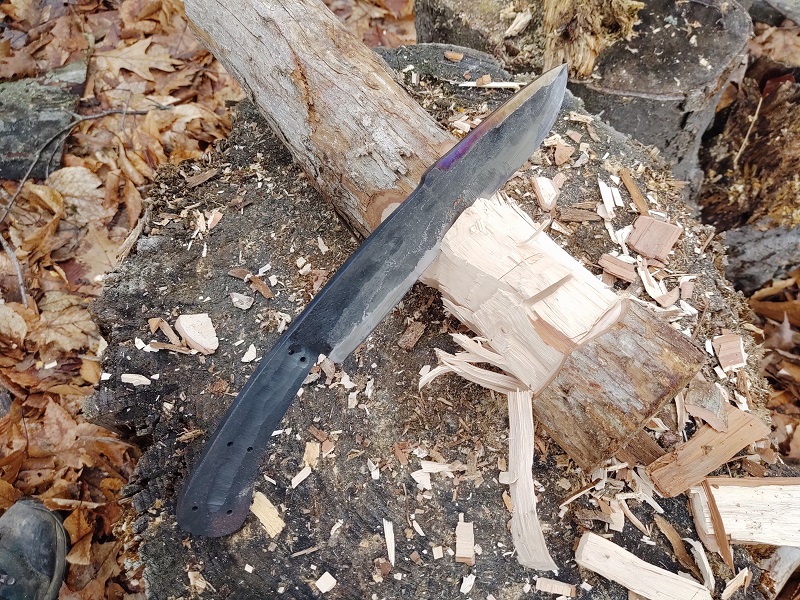
________________
As an Amazon associate, we earn income from qualifying purchases when you click on a link. Your link clicks help us fund our website.________________
